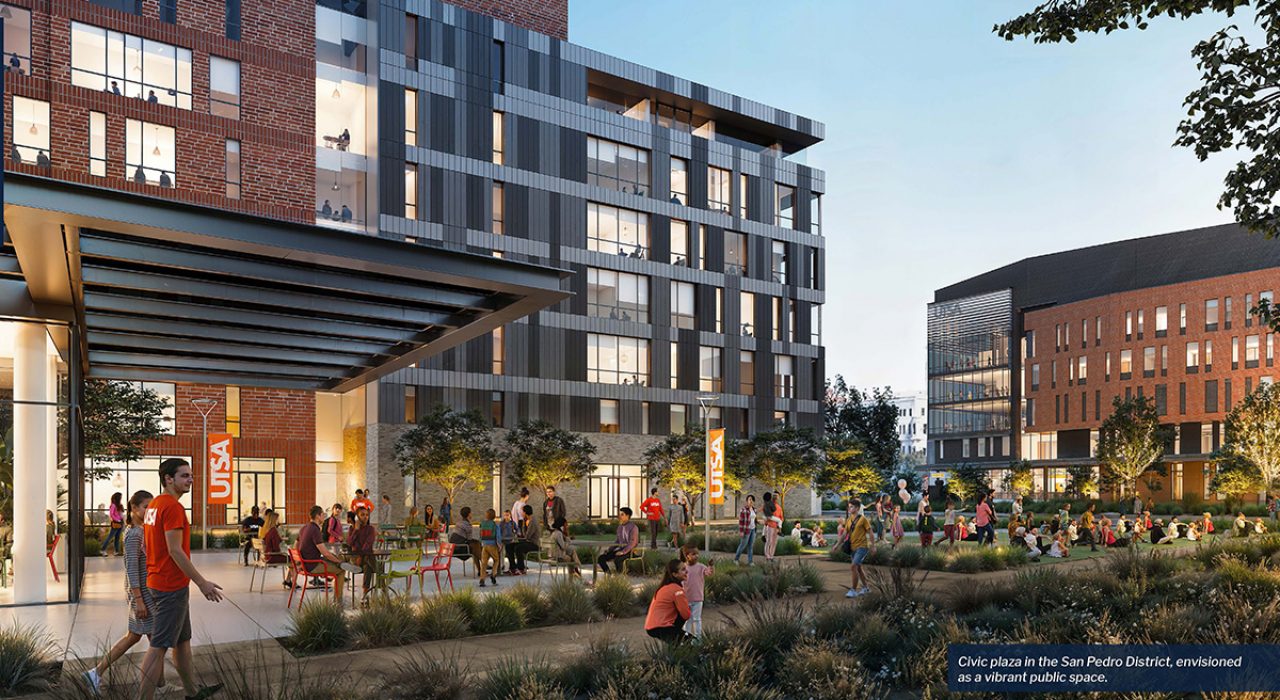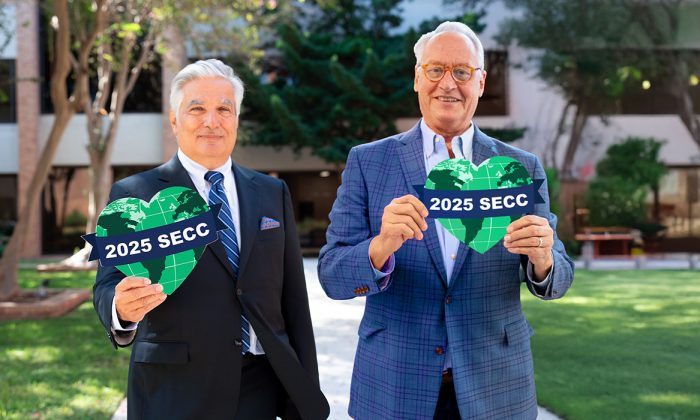The University of Texas at San Antonio’s district planning initiative reached a key milestone Thursday as the team released its final report.
The long-term goal of district planning is to ensure students, faculty and staff have the academic, research and infrastructure support necessary for success.
Feedback from stakeholders — including university leadership, student groups, academic departments, support services, faculty and staff, focus groups and a campus-wide survey — was essential to the study. The assessment evaluates space needs across the university’s academic campuses and presents a growth framework that addresses immediate priorities while identifying opportunities for long-term development.
“The district planning initiative will help accelerate the university’s ongoing growth in an informed, engaged and strategic way,” said Veronica Salazar, senior executive vice president for enterprise development and transformation. “It provides a roadmap for how existing and future physical infrastructure will support the development and success of our campuses.”
Guided by the 2019 Campus Master Plan and the 2022-23 Strategic Plan Refresh, the study supports these previous plans for continued growth at the university’s Main Campus and downtown locations.
The initiative prioritizes and analyzes ways to strategically align physical infrastructure, academic programs, research capacity and campus experience to support the university’s long-term academic and research growth.
“Strategically locating academic and research programs together is key to advancing both student success and academic excellence,” said Heather Shipley, provost and senior executive vice president for academic affairs. “This plan reflects our commitment to aligning space, people and purpose to support UT San Antonio’s continued growth as a world-class public research university.”
To ensure that the physical campus environment supports the stated goals, the initiative assessed key aspects of the campus experience, including buildings, research infrastructure, transportation and mobility, housing, services and amenities, placemaking and other related topics.
Downtown locations
Maximizing locational advantages is an essential part of the report’s recommendations for the university’s downtown locations.
Proposed strategies include:
- Strengthening connections and partnerships with local businesses and the downtown community.
- Relocating the College of Education and Human Development and establishing the new College of AI, Cyber and Computing downtown to support career-engaged learning and expand academic and professional opportunities.
- Exploring short-term, long-term and phased opportunities to provide on-campus student housing throughout the university’s downtown locations.
- Parking and mobility improvements that support varied transportation options, including walking, biking and public transportation.
- Expanding services and amenities available to students, faculty and staff, including retail and dining locations, athletic and recreational facilities, support services and more.
- Incorporating heat reduction strategies such as canopies, pavilions and sheltered transit stops for community comfort.
These efforts are intended to strengthen UT San Antonio’s role as a hub for innovation and urban engagement.
Main Campus and Park West
Over the past decade, the Main Campus has undergone continuous growth and transformation, with seven new buildings added in the last six years, and Blanco Hall scheduled for completion at the end of this year.
The study’s recommendations aim to continue this momentum while enhancing campus resources that promote student success. Findings and recommendations include:
- Expanding on-campus housing capacity.
- Adding new wet and dry laboratory spaces to meet growing research demands.
- Placemaking improvements that foster community, connection and wellness with enhanced physical spaces for events, gatherings, socializing, studying and other recreational activities.
- Promoting a pedestrian and bike-friendly campus core.
- Expanding services and amenities, including retail and dining locations, athletic facilities and recreational spaces.
- Developing Park West to enhance the student-athlete experience, and exploring potential housing, retail and hospitality uses for the location.
These efforts and more could enhance the overall Main Campus experience, support future academic and research expansion, and strengthen connections with the surrounding area to build on existing opportunities and local partnerships.
UT San Antonio Health Science Center began its own official master plan update prior to the institution’s integration with the university and plans to complete the update process.
As the integration of the two institutions progresses in the coming months and years, further study will be required to address district planning for UT San Antonio.
Looking ahead to the immediate future, in Fall 2025 and Spring 2026 semesters, the district planning team will engage with targeted university stakeholders for discussions that will contribute to in-depth planning for the next phase of moves and renovations, which are expected to begin in summer 2026.
To learn more about district planning studies and for details about the recommendations above, students, faculty, staff and the community are encouraged to review the district planning final report on the Real Estate and Property Management website.



